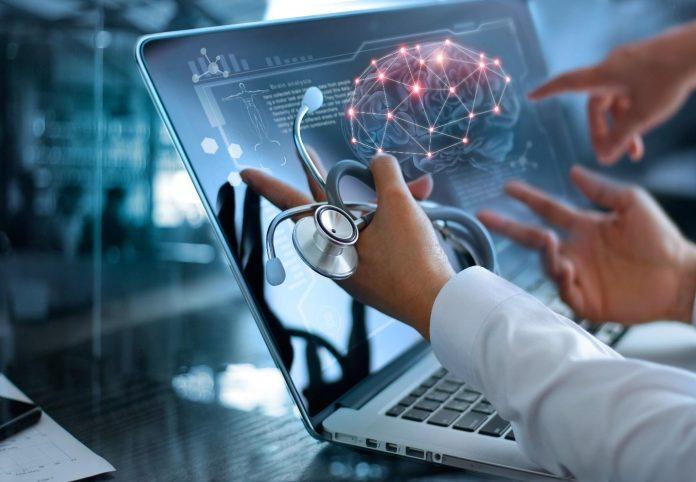The significance of medical education endures in the constantly changing world of healthcare. The basis of medical practice has been established over many years on the pillars of thorough training, practical experience, and ongoing adaptation to new knowledge.
But as technology has advanced, medical education approaches have experienced a significant alteration. How medical students, professionals, and other users learn, retain, and apply information has been completely transformed by the incorporation of cutting-edge technologies and digital platforms.
Let’s explore some of the amazing success stories that demonstrate how technology has transformed medical education, breaking down barriers and launching the industry into a new phase of innovation.
Table of Contents
The Dawn of Digital Dissemination
The days of getting all of your medical information from hefty textbooks and boring lectures are long gone. There are now more ways than ever to get medical information because to the development of the internet and digital media.
Social media, online platforms, and even medical websites have developed into true treasure mines of medical knowledge. The way healthcare professionals obtain the most recent research, clinical recommendations, and case studies has changed thanks to websites like Medscape and Up-to-date.
The accessibility of high-quality material to a worldwide audience has democratized medical education thanks to the ease of digital resources.
Virtual Reality: Bridging the Gap
Imagine a medical student being taken inside the complicated heart chambers or the convoluted brain networks. This is the potential of virtual reality (VR) in medical education, not the stuff of science fiction.
Virtual reality (VR) has become a potent tool for immersive learning, allowing students to interact and perceive anatomical structures and medical processes in novel ways. Aspiring surgeons may perform procedures in a risk-free setting thanks to realistic surgical simulators created by companies like Osso VR.
This practical method, made possible by technology, improves muscle memory and confidence, which leads to better patient results.
Interactive Learning through Gamification
Who would have guessed that playing video games may aid medical students in developing into better doctors? In medical education, gamification has emerged as an intriguing tactic that makes learning fun.
Even though, it is evident that a GAMSAT tutor has preferred and explained the significance and importance of learning medicine through gamification in preparatory course. Some students have revealed the potential benefits of gamification in learning medicine.
Users are tasked with diagnosing and treating virtual patients in “Prognosis” and similar applications by presenting clinical situations as interactive scenarios. Gamified learning improves critical thinking and decision-making abilities by incorporating game principles like competition and prizes.
Moreover, it provides a secure environment in which one may err, learn from errors, and improve their medical judgment.
Telemedicine: Learning Beyond Borders
Along with revolutionizing patient treatment, telemedicine has also eliminated distance obstacles in medical education. Medical students can view procedures and conversations from all around the world using teleconferencing and live-streamed operations.
Now, surgeons in New York may advise medical students in Nairobi by instantly imparting their knowledge.
This international partnership promotes intercultural understanding and exposes students to a variety of medical specialties, widening their perspectives and enhancing their educational experience.
AI-Powered Personalized Learning
By adapting learning experiences to individual requirements, artificial intelligence (AI) has made considerable progress in medical education.
AI algorithms are used by adaptive learning systems to assess a student’s strengths and shortcomings and design individualized learning routes. For instance, the AMBOSS platform adjusts the complexity of questions and modules in accordance with a learner’s speed.
This tailored strategy not only maximizes learning effectiveness but also encourages information retention over the long run.
The Rise of Online Courses
Formal education is no longer restricted to traditional classroom settings. Medical professionals and students may now seek specialized training and degrees in the convenience of their own homes thanks to the rise of online learning platforms.
Courses are available on a variety of medical subjects, from clinical research to healthcare administration, on platforms like Coursera and edX.
These classes, which are frequently presented by well-known specialists, offer flexible and practical solutions for skill improvement and career progression.
Collaborative Learning through Social Media
Social media, which was long seen as a diversion, has emerged as a facilitator of group learning in the medical industry.
Medical conversations, information exchange, and networking have shifted to professional social media sites like LinkedIn and Twitter. By sharing case studies, research results, and clinical ideas on these platforms, medical practitioners are establishing a worldwide community of practice.
Medical Particularly on Twitter, robust discussions and the exchange of factual information have grown in popularity.
Simulated Patients and Interactive Simulations
The change from theory to practice is an important step on the path from medical student to seasoned practitioner. Interactive simulations and simulated patients have become essential instruments in this process.
Students can use their theoretical knowledge in a controlled setting by using these simulations to recreate real-world circumstances. Platforms like Standardized Patient Encounters (SPE) provide a variety of situations that improve clinical thinking and communication abilities.
These simulations equip trainees with the confidence and empathy necessary to successfully negotiate the intricacies of patient relationships.
Augmented Reality for Enhanced Learning
Another emerging technology in medical education is augmented reality (AR). With augmented reality (AR), students may create immersive learning experiences by superimposing digital content over the real environment.
For instance, anatomy classes may be turned into interactive sessions where students can view 3D representations of organs and systems as they function. AR improves spatial comprehension and offers a dynamic viewpoint that conventional textbooks just cannot match.
Challenges and Considerations
Although there have been notable improvements as a result of the use of technology into medical education, it is important to recognize and deal with the difficulties that come along with this change. The digital divide is one of the main issues.
The lack of equitable access to technology and fast internet might exacerbate existing educational disparities. Efforts must be taken to guarantee that everyone, regardless of socioeconomic status, has access to technology-driven education.
Future Prospects
Future technological advancements in medical education are expected to be much more innovative. Emerging technologies like block-chain have the power to transform medical credentialing and safe academic achievement sharing.
Avatars of virtual patients with AI-driven emotional reactions could offer a subtle training ground for communication abilities. Further blurring the distinction between the virtual and real worlds is possible with the use of haptic feedback into virtual simulations.
Wrapping Up
One can clearly see how technology has permanently changed the face of medical education as the pages of history turn. The success examples mentioned in this article are but a sample of the countless opportunities that technology opens up.
Each breakthrough has helped revolutionize how medical information is learned, disseminated, and implemented, from virtual reality surgery to individualized AI-guided learning.
A fascinating future in which the quest of medical excellence is entwined with the wonders of the digital age is promised by the ongoing evolution of the symbiotic link between medicine and technology.








